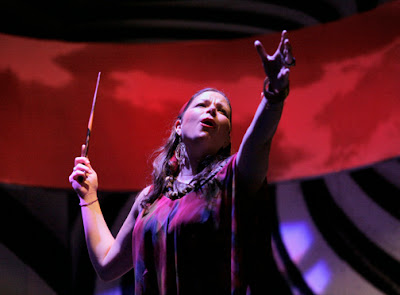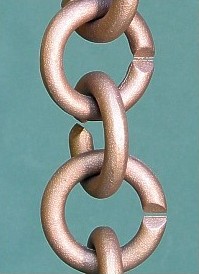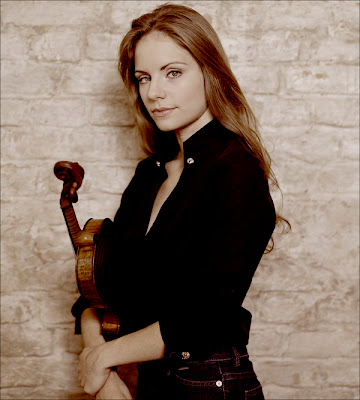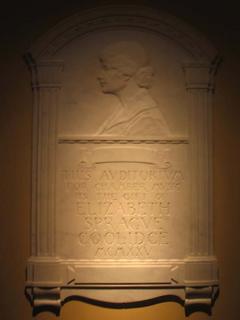 When Kent Nagano asked Wolfgang Rihm to compose an opera for the National State Opera in Munich – as and ‘opening act’ to Salome, Rihm immediately had a sujet in mind and was only too happy to oblige. The double bill was conceived as a statement of the renewal of tradition by way of metamorphosis – the theme under which Kent Nagano took on the general directorship of the Bayerische Staatsoper in 2006.
When Kent Nagano asked Wolfgang Rihm to compose an opera for the National State Opera in Munich – as and ‘opening act’ to Salome, Rihm immediately had a sujet in mind and was only too happy to oblige. The double bill was conceived as a statement of the renewal of tradition by way of metamorphosis – the theme under which Kent Nagano took on the general directorship of the Bayerische Staatsoper in 2006.
The subject of Das Gehege is the last scene of the third and final act of Botho Strauss’ Schlusschor: Gruppenbilder mit Dame und Adler (“Concluding Chorus: Group Portraits with a Lady and an Eagle”). One of the most prolific and important German writers of the last thirty years, Botho Strauss’ art of poignant imprecision takes on German Reunification in this play, ladden with symbolism. The title riffs of Heinrich Böll’s war/post-war novel “Gruppenbild mit Dame” and the finale of Beethoven’s Ninth Symphony. Coping with Germany’s past and future is roughly the thread that keeps three very different acts together – and knowing the play migh help understand some references in Das Gehege, but it is hardly necessary to experiencing Rihms’ opera. The composer might like it just like that – after all he’s on record suggesting that the artist explaining his art is not only unnecessary but even counterproductive to bringing about greater clarity. (Art always contains its own measure of understandability.)
Rihm’s monodrama, with acknowledged similarities to Schoenberg’s Erwartung, begins when ‘The woman’ (Anita von Scharstorf in the play) enters the stage on the center of which William Friedkin (yes, he of The Excorsist and The French Connection fame) places an abstract gleaming white cage that contains the winged creature that we need not need be able to identify as Botho Strauss’ Golden Eagle. To the music of Rihm – abstract here, twistedly literal there – the opening lines may make little sense on their own. (“Yes, I hear your rotten screeching, Yes I can see your ashen-green eyes. Limp strings of saliva dangle from your suppurative mouth. I see the black teeth and your mold covered throat… and your cheeks, covered with ancient lichens that are themselves a growth from an earth of decayed faces…”)
But they give rise to a very personal interpretation of what is going on in Das Gehege. It need now no longer be the story of Anita von Scharstorf, daughter of an officer who was killed in the war when he plotted against the Nazis, who breaks into the Zoo in Berlin on the night of the fall of the Berlin Wall. The beast in the cage need no longer be a literal eagle. The analogy about Germany and German symbols can be reinterpreted at will (given sufficient, liberating ignorance) – with the strange role of the ‘griffin’ and the sexual/aggressive tension between the him/it and Anita taking on a rather more disturbing quality.
This is just one of numerous flights of the imaginations’ fancy that can take place to Rihm’s music and Friedkin’s set (which seems to support a less literal interpretation). Not the least because of Gabriele Schnaut’s dramatic (a formidable Elektra in recent Dresden and Munich productions), the mutely danced and hauntingly present performance of Steven Barrett as the eagle/beast (choreography David Bridel), and the dramatic lighting (Mark Jonathan), this monodrama actually manages to be compelling as a story (no matter the amount of background knowledge) in which you wanted to know what would happen next. (Feathered, castrated, and killed – the bird does not fare well.)
How does “Das Gehege” fit with Salome? Different as they are, similarities abound – and they are to be found in the music, the story, and the staging. William Friedkin is neither a stranger to opera, nor combining two individual operas into one evening of coherent drama.
Friedkin, who came to opera through the former music director of the Bavarian State Opera, Zubin Mehta, has Wozzek, Aida, Samson and Dalila und his belt, and in Los Angeles and at the Washington National Opera he put the odd double bill of Bluebeard’s Castle and Gianni Schicci on stage. Combining the uncombinable was a challenge not only met with success, but Friedkin’s approach to such a project got honed. And with the infinitely greater means that the Bavarian opera can offer its directors, as well as the greater similarities between the operas, he succeeded spectacularly in the Rihm/Strauss production.
Two women who kill (or have killed) the object of their desire; both of which were chained and at their mercy. The symbolism and references of winged death in Salome – and the Eagle, symbol of a (bygone) power and – ultimately – mortality in Das Gehege. The Eagle’s doom is his lack of prowess and power. Perhaps this, too, could be linked to Strauss’ opera. If Jochanaan had had the strength to look at Salome he may likely have lived. (Whether or not he had consequently loved Salome, as she herself suggests wistfully.) But his frantic rejection of Salome more than hints at inner uncertainty; at a religious fanaticism not rooted in inner strength but inherent weakness. Knowing Richards Strauss’ atheism and his appreciation of Nietzsche only underscores this interpretation. Indeed, his portrayal of Jochaanan is subtly more damning than the comedic relief of the squabbling Jews that run through the opera like imported from a Marx Brothers film.
Musical connections are made in that Rihm not only references Beethoven’s Ninth but includes at least two audibly Straussian moments in his score; moments that sounds as if a modern painter added his own abstract interpretation on top of a representational piece of art. The sharp edged and contorted marches that make for orchestral interludes will tip the listener in the know of to the thematic background of ‘Germanness’.
 Strongest are the visual connections with which Friedkin links the two operas. The staging is essentially the same – with movable U-shaped elements that make for the shiny white floor and walls. Two such units and the similarly constructed cage set the stage for Das Gehege and seven or eight are arranged and rearranged in Salome to give the opening the appearance of the outside of a gigantic palace’s rotunda, receding nearly into infinity and showing off the immense stage-depth of the Staatsoper. Jochanaan, first heard through the cracks in the floor, appears from beneath as the floor yields to the left and right – sitting under a gigantic petrified tree-trunk. Further visual cues are given: The cage is also the throne of Herod from which he orders the killing of Salome in the last scene. (In this production Salome receives death at the hands of a group of black-clad religious men who, in a near cathartic move and timed to the last chord, present the cut head of Salome. Since Oscar Wilde himself had reflected on Jochanaan’s revenge being that Salome beheaded herself in desperation, this is not so far fetched.) Finally the “Angel of Death” appears physically – in the form of Steven Barrett’s grim griffin/eagle. He throws Salome her vails, he dances ominously along with her, he takes Herod’s ring from Herodias as paypment and then beheads (sight unseen) Jochanaan. (Not unlike the figure of Cherub in the Claus Guth/Nikolaus Harnoncourt Marriage of Figaro from the 2006 Salzburg Festival – and similarly easy to find an asset or distraction.)
Strongest are the visual connections with which Friedkin links the two operas. The staging is essentially the same – with movable U-shaped elements that make for the shiny white floor and walls. Two such units and the similarly constructed cage set the stage for Das Gehege and seven or eight are arranged and rearranged in Salome to give the opening the appearance of the outside of a gigantic palace’s rotunda, receding nearly into infinity and showing off the immense stage-depth of the Staatsoper. Jochanaan, first heard through the cracks in the floor, appears from beneath as the floor yields to the left and right – sitting under a gigantic petrified tree-trunk. Further visual cues are given: The cage is also the throne of Herod from which he orders the killing of Salome in the last scene. (In this production Salome receives death at the hands of a group of black-clad religious men who, in a near cathartic move and timed to the last chord, present the cut head of Salome. Since Oscar Wilde himself had reflected on Jochanaan’s revenge being that Salome beheaded herself in desperation, this is not so far fetched.) Finally the “Angel of Death” appears physically – in the form of Steven Barrett’s grim griffin/eagle. He throws Salome her vails, he dances ominously along with her, he takes Herod’s ring from Herodias as paypment and then beheads (sight unseen) Jochanaan. (Not unlike the figure of Cherub in the Claus Guth/Nikolaus Harnoncourt Marriage of Figaro from the 2006 Salzburg Festival – and similarly easy to find an asset or distraction.)
All this would have sufficed to make for an impressive production. Kent Nagano’s propulsive, angular, never sweet orchestral contribution assured it was musically a treat, also. Better still was the singing and acting. Wolfgang Schmidt, whose oddly compelling Siegfried can be enjoyed in the recently released Levine/Kirchner Götterdämmerung from Bayreuth’s “Designer” Ring, gave a compellingly lecherous Herod and offered more vocal prowess than expected until near the end. Iris Vermillion as Salome’s whore of a mother (no, this really isn’t a kids’ opera) growled to harrowing effect. Morten Frank Larsen as Jochanaan boomed magnificently through the house but may have given a bit too much, too early, as his decline was most notable. Kevin Conners, the trusty man for everything at the Staatsoper, sang as well as he usually does, but might be a little miscast in the figure of the young and beautiful captain of the guard, Narraboth.
Outstanding, in most ways, was Angela Denoke’s Salome. If anything could be criticized in her portrayal it was a hint too much confidence, being a touch too calculating in her seduction. Salome’s intrigue with her own sexual powers and at the same time her disgust with the effects it has on men was not as played as vividly as might have been desirable. Her singing, though remarkable overall, was marked by effort in louder passages and the vocal sleigh-ride up to the high notes could benevolently be called “old fashioned”. But who cares after this most racy, cruelly seductive, virulently sexual Salome! Denoke does with technique what others may (or may not) be able to do with aura. The way she gets Narraboth to do her bidding alone was ruthless in its application of sexual allure (it had just the air of desperation, joy and disgust that you find in the school-scene where Nabokov has his Humpert pay Lolita off for a hand-job under the table).
Denoke, who appears half her age on stage, then (pace Shirley Apthorp) went on to deliver a superbly choreographed and executed dance of the seven veils that would have been considered steamy even in the seediest of adult clubs. The unhealthy staring that is the theme of the opera itself (Narraboth and Herod unto Salome, Salome unto Jochanaan) now took place on part of the audience. If any kids were present, they probably had their eyes covered by concerned mothers. And that was before Salome/Denoke strips down to stand bare breasted before her stepfather.
The resulting “Wundervoll, wundervoll!” on Herod’s part thereby attained a quality and color that immediately drove home the point that this was not just gratuitous baring of flesh (Denoke remained half naked until she gets killed) but baring of flesh with a dramatic point to make. A dramatic point that, admittedly, may have been lost on some (male) audience members due to the aesthetic pleasure that Denoke’s visual performance added to the reasonably impressive vocal contribution.
In international comparison, the Munich opera crowd could certainly not be called conservative. It willingly exposes itself to modern works and modern productions, and so long as you don’t mess with a few holy classics they will accept much without demurring. But in an inner-German comparison, it certainly is traditionalist. The unanimous and thunderous applause (and the many “Ticket sought” signs in front of the opera house) were thus not only a deserved tribute to Denoke’s performance but also proof that the Munich audience noted that what they had seen was not a wilful or gratuitously warped modern interpretation of Wilde an Strauss. Instead it came very close to the shocking, decadent, saucy, and twisted intent of its creators. An (a)rousing affair, indeed. 


































































